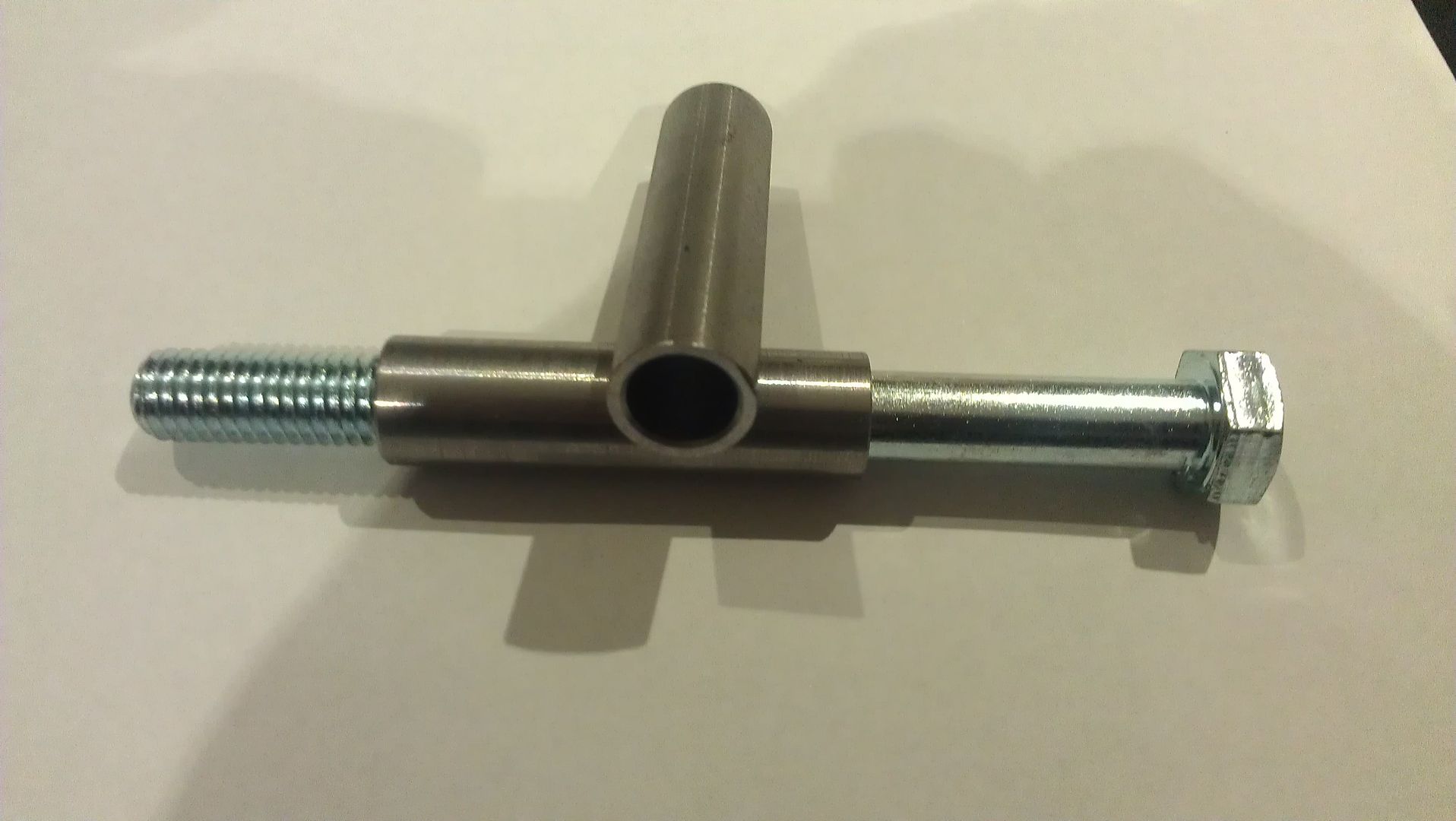 Thanks: 0
Thanks: 0
 Needs Pictures: 0
Needs Pictures: 0
 Picture(s) thanks: 0
Picture(s) thanks: 0
Results 16 to 21 of 21
Thread: Steel tubing source
-
2nd July 2013, 09:37 PM #16
 Cba
Cba











- Join Date
- Aug 2007
- Location
- Melbourne
- Age
- 68
- Posts
- 1,417

I am NOT at all an expert on this! But I believe, in a 4x4 body lift the whole cabin and its passengers are supported by just about a dozen of the above items onto the ladder frame chassis. In an accident, this dozen of thin walled long tubes with 10mm thin bolt inside will be exposed to enormous bending and shear stresses. Much greater stresses than the original shorter bolts have to cope with. You mention the original (and much shorter) spacers are captive in the body. That "captivity" would greatly reinforce them, but I doubt the extended ones would be more than partly captive. For a body lift, which by definition requires longer spacers, I would recommend to make them out of massive round bar of about 40 or 50mm diameter, bored out just enough (say 10.2mm) for the 10mm bolts. And I would definitely suggest to use 10.9 or 12.9 grade high tensile bolts for this application, not just ordinary 8.8. With Nyloc nuts to match. After all, your and your passengers lives will depend on these. Imagine the car body with passengers and cargo breaking free of the underlying chassis/engine/drivetrain/wheels..... shivers. On the risk of sounding like an overly worried old fool, consider if things go wrong and your (or the other party's) insurer finds out about your diy body lift without an engineer's certificate, you may loose your home and whatever you possess.
-
2nd July 2013 09:37 PM # ADSGoogle Adsense Advertisement
- Join Date
- Always
- Location
- Advertising world
- Age
- 2010
- Posts
- Many
-
2nd July 2013, 10:44 PM #17
 Senior Member
Senior Member











- Join Date
- Nov 2008
- Location
- Qld. Australia
- Posts
- 417

My guess is these are just the sleeves to go inside polyurethane blocks (usually 50mm in diameter) so the poly blocks don't compress.
Nev.
-
2nd July 2013, 11:54 PM #18
 Member
Member











- Join Date
- Oct 2011
- Location
- Brisbane
- Posts
- 65

You are both wrong. The component actually serves no apparent useful purpose. A bolt passes through the floor pan though an oversize hole in the chassis without touching the chassis and bolts to a bracket on the side of the body again. So basically the bolt is attached to the body at each end but it passes through the chassis without touching it. It is our attention to detail that wants to retain this component when most would just ignore it and just remove the bolt. We figure that this apparently useless assembly must serve some purpose. I suspect it is a safety feature in case a body mount fails so the body is retained captive by this assembly. Options are to extend the bracket or extend the sleeve.
And yes, we do know what we are doing, we do have engineering approvals where appropriate and also have certain type approvals issued by the transport department in our state. We use 8.8 grade bolts with Nyloc nuts in accordance with Transport requirements. This is what the transport inspectors look for so we don't want to disappoint by providing a higher spec which they may not recognise...
There is no need to sleeve plastic blocks if the appropriate plastic is used (we don't use polyurethane). However if you live in S.A. where the local transport department is not up with modern engineering materials accepted in all other states you must use metal blocks. There are a number of disadvantages from using metal but we are getting a bit off topic...
-
3rd July 2013, 01:10 AM #19
 Senior Member
Senior Member











- Join Date
- May 2012
- Location
- Kimberley, West Australia
- Posts
- 139
 Tube source
Tube source
Try another hydraulics firm, it certainly comes in smaller sizes, Combustor.
Old iron in the Outback, Kimberley WA.
-
3rd July 2013, 10:26 AM #20
 Senior Member
Senior Member











- Join Date
- Aug 2009
- Location
- Quindanning, WA
- Posts
- 175

This sounds like a spacer to allow the bolt to be tightened without crushing the hollow chassis rail... If so definitely should be retained.
-
3rd July 2013, 12:25 PM #21
 Member
Member











- Join Date
- Oct 2011
- Location
- Brisbane
- Posts
- 65

Shame I did not take a photo of this bit but it is not that at all, there is daylight around it and the chassis. I don't quite know where the designers mind was but it can only be a safety feature in case body mounts let go. You would have thought it cheaper to use M12 bolts like my Hilux does...
Similar Threads
-
Pls help - Which machine for steel tubing??
By JonT in forum METALWORK FORUMReplies: 7Last Post: 7th September 2011, 12:20 AM -
Drill Steel Source
By Oldneweng in forum METALWORK FORUMReplies: 8Last Post: 5th September 2011, 08:53 PM -
Stainless Steel Tubing ?
By Arry in forum WOODWORK - GENERALReplies: 13Last Post: 12th July 2010, 01:00 AM -
square steel tubing strength
By fuel-depot in forum METALWORK FORUMReplies: 6Last Post: 21st January 2007, 11:32 PM



 Likes:
Likes: 



